To master dynamic drone altitude shifts, start by perfecting gradual ascent techniques, fine-tuning your throttle control for smooth upward movements. Next, practice rapid descent maneuvers, gradually increasing downward speed while maintaining situational awareness. Effectively use altitude hold mode to stabilize your shots at specific heights. Combine lateral movement with elevation changes to add depth and interest to your footage. Finally, focus on smooth shifts between heights, using gentle throttle adjustments for seamless altitude changes. By mastering these five techniques, you'll elevate your drone piloting skills and capture stunning aerial footage. Discover how these tips can transform your aerial cinematography to new heights.
Key Takeaways
- Combine lateral movements with altitude changes for more dynamic and cinematic shots.
- Practice smooth transitions between heights using gentle throttle adjustments and steady pacing.
- Utilize altitude hold mode for stable shots, then switch to manual for creative elevation changes.
- Master both gradual ascent and rapid descent techniques to diversify your aerial footage.
- Plan your altitude shifts in advance, considering obstacles, wind conditions, and optimal shooting angles.
Master Gradual Ascent Techniques
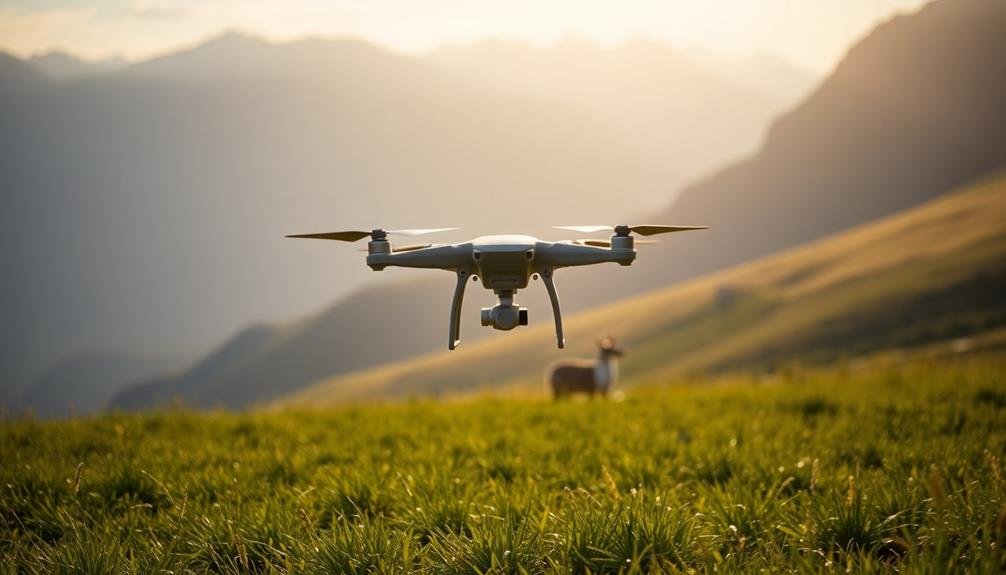
One of the most essential skills for drone pilots is mastering gradual ascent techniques. To achieve smooth and controlled upward movements, you'll need to practice fine-tuning your throttle control. Start by applying gentle, consistent pressure to the throttle stick, increasing altitude slowly and steadily.
As you ascend, keep an eye on your drone's vertical speed indicator to maintain a constant rate of climb. Pay attention to environmental factors like wind speed and direction, which can affect your drone's ascent. Adjust your throttle input accordingly to compensate for these external forces.
It's vital to maintain situational awareness during the climb, constantly scanning for obstacles and monitoring your drone's position relative to its surroundings. Practice ascending at different rates to develop a feel for your drone's responsiveness.
Begin with slower climbs and gradually increase your speed as you become more comfortable. Remember to factor in your drone's weight and payload when executing ascents, as these can greatly impact its performance.
Perfect Rapid Descent Maneuvers
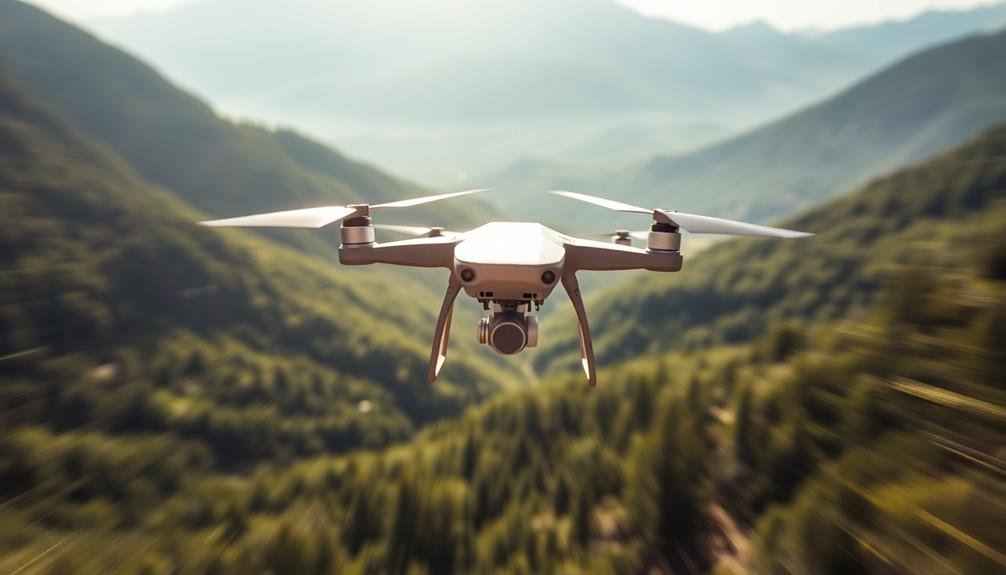
With safety and precision in mind, mastering rapid descent maneuvers is vital for drone pilots. To perfect these techniques, you'll need to practice controlled drops while maintaining situational awareness.
Start by familiarizing yourself with your drone's descent rate capabilities and emergency landing procedures.
When executing a rapid descent, gradually increase your downward speed while monitoring your surroundings. Use the throttle stick to control your descent rate, and keep an eye on your altitude readout. It's important to maintain a clear line of sight and avoid obstacles during the maneuver.
As you approach your target altitude, begin to slow your descent by easing up on the throttle. This gradual deceleration will help you avoid abrupt stops that could destabilize your drone.
Practice smooth shifts from descent to hover or forward flight to enhance your overall control.
Remember to account for wind conditions, as they can notably affect your drone's behavior during rapid descents. Always have an emergency plan ready, such as activating return-to-home mode if you lose visual contact.
Utilize Altitude Hold Effectively
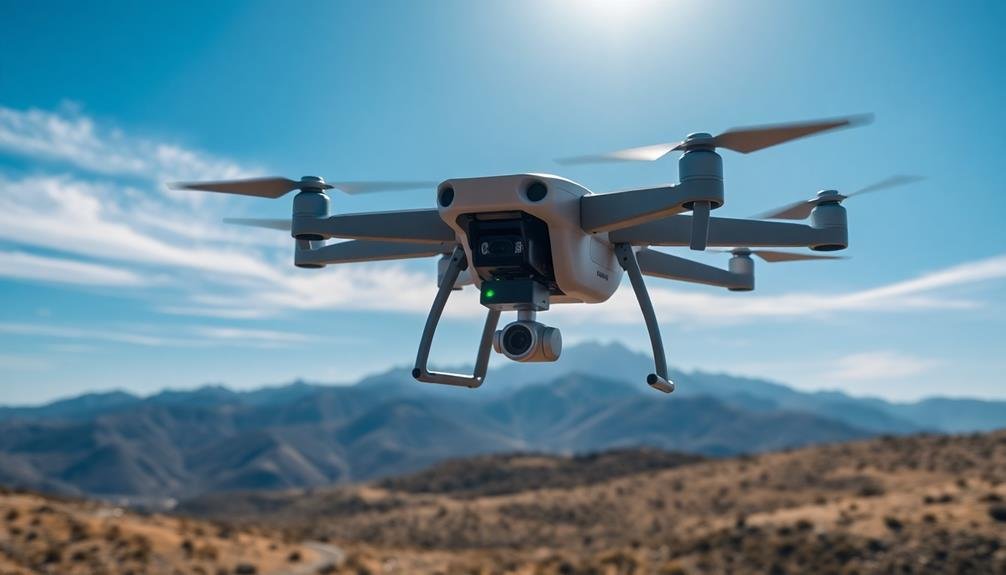
After mastering rapid descents, it's time to explore another essential feature of modern drones: altitude hold. This function allows your drone to maintain a consistent height automatically, freeing you to focus on other aspects of flight.
To utilize altitude hold effectively, first verify your drone is calibrated correctly. Most models require a flat surface for takeoff to establish a baseline. Once airborne, engage the altitude hold mode through your controller or app. You'll notice the drone stabilizes at its current height.
Practice switching between manual and altitude hold modes mid-flight. This skill is vital for seamless changes during complex maneuvers.
When using altitude hold, pay attention to your surroundings. While the drone maintains its height, it may still drift horizontally due to wind.
Experiment with different altitudes to find the sweet spot for your shots. Lower heights often provide more detail, while higher altitudes offer broader perspectives.
Use altitude hold in conjunction with other flight modes, like follow-me or orbit, to create dynamic footage.
Combine Lateral Movement With Elevation
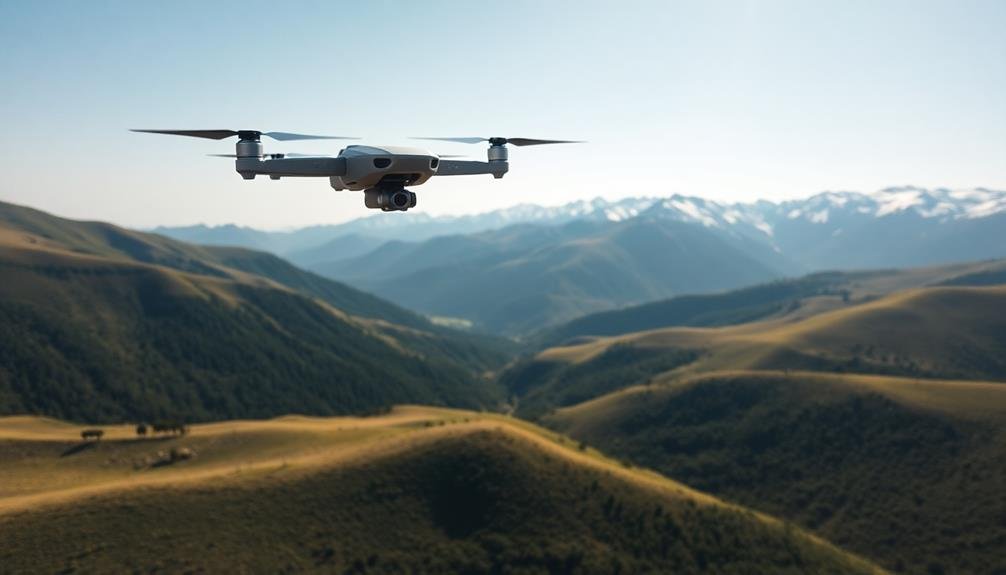
Mastering the combination of lateral movement and elevation changes can dramatically enhance your drone footage. When you're flying, try to think in three dimensions, not just two. As you move your drone forward, backward, or sideways, simultaneously adjust its altitude to create dynamic and engaging shots.
Start with simple combinations like ascending while moving forward, or descending while panning left. These basic maneuvers will help you develop a feel for multi-axis control. Once you're comfortable, experiment with more complex patterns.
Try a spiral ascent by combining a circular lateral movement with a steady climb. Or create a "roller coaster" effect by alternating between climbs and dips as you fly forward.
Remember to keep your movements smooth and controlled. Gradual changes in both direction and altitude often produce the most cinematic results. Use your drone's gimbal to maintain a steady frame while executing these combined movements.
Practice different speeds and intensities to find the right balance for your specific shot. By mastering these techniques, you'll be able to capture truly unique and fascinating aerial footage that stands out from the crowd.
Practice Smooth Transitions Between Heights
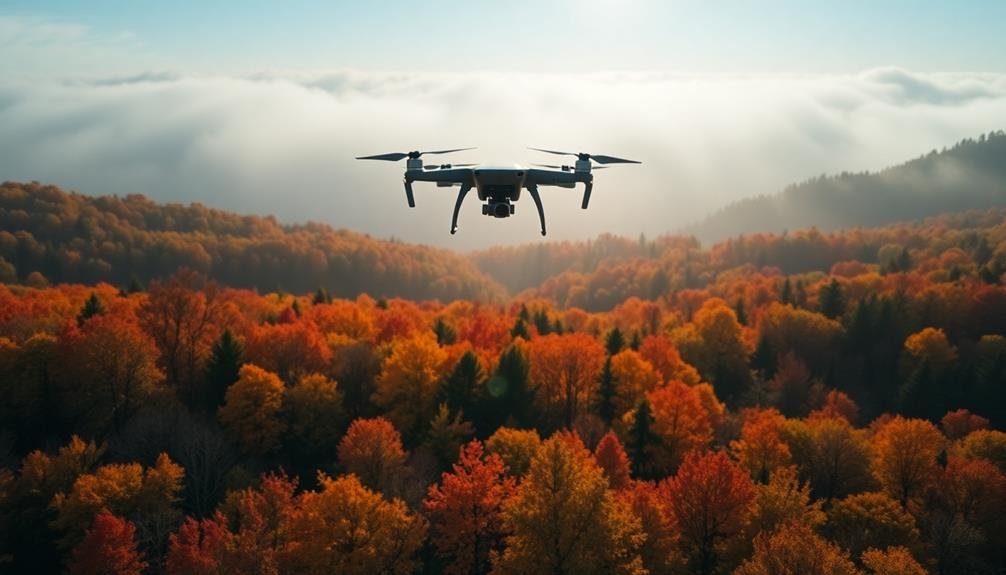
Smooth altitude changes are a key element in creating professional-looking drone footage. To master this skill, you'll need to practice shifting between different heights seamlessly. Start by understanding your drone's controls and sensitivity settings. Adjust these to match your flying style and the specific shots you're aiming for.
When changing altitude, use gentle, gradual movements on the throttle. Avoid sudden jerks or rapid ascents and descents. Instead, aim for a steady, controlled pace that maintains a consistent speed throughout the shift. This will result in more fluid and cinematic footage.
Here's a quick reference guide for smooth altitude shifts:
| Technique | Ascending | Descending |
|---|---|---|
| Speed | Slow & steady | Gradual deceleration |
| Direction | Combine with forward motion | Pair with backward motion |
| Focus | Keep subject centered | Maintain composition |
| Timing | Plan shift points | Anticipate landing zone |
Practice these techniques in open areas with minimal obstacles. Start with simple up and down movements, then progress to more complex patterns. Remember to always comply with local drone regulations and respect privacy and safety guidelines while honing your skills.
Frequently Asked Questions
How Does Wind Speed Affect Drone Altitude Changes?
Wind speed greatly impacts your drone's altitude changes. You'll find stronger winds make it harder to ascend or descend smoothly. It's essential to adjust your controls and anticipate resistance when changing altitude in windy conditions.
What Are the Legal Altitude Limits for Recreational Drone Flying?
You'll need to follow legal altitude limits when flying your recreational drone. Generally, you can't exceed 400 feet above ground level. Be aware that specific restrictions may apply near airports, controlled airspace, or during emergencies.
Can Altitude Shifts Impact Battery Life Significantly?
Yes, altitude shifts can greatly impact your drone's battery life. You'll use more power ascending and fighting winds at higher altitudes. Frequent changes in elevation will drain your battery faster than maintaining a steady altitude.
Are There Specific Drone Models Better Suited for Dynamic Altitude Changes?
You'll find that DJI's Mavic 3 and Autel's EVO II Pro are excellent for dynamic altitude changes. They've got powerful motors and advanced flight controllers. Don't forget Skydio 2+, which excels in obstacle avoidance during altitude shifts.
How Do Different Weather Conditions Influence Altitude Control Techniques?
You'll find that wind, temperature, and air pressure greatly affect your altitude control. In strong winds, you'll need to compensate more. Cold air's denser, requiring more power. High pressure helps lift, while low pressure challenges stability.
In Summary
You've now got the tools to take your drone flying to new heights—literally! By mastering these altitude techniques, you'll create more dynamic and visually stunning footage. Remember, practice makes perfect. Don't be afraid to experiment with different combinations of movements. As you become more comfortable with these skills, you'll find your aerial cinematography improving dramatically. Keep pushing your boundaries and you'll soon be capturing breathtaking shots that'll leave viewers in awe.

As educators and advocates for responsible drone use, we’re committed to sharing our knowledge and expertise with aspiring aerial photographers.
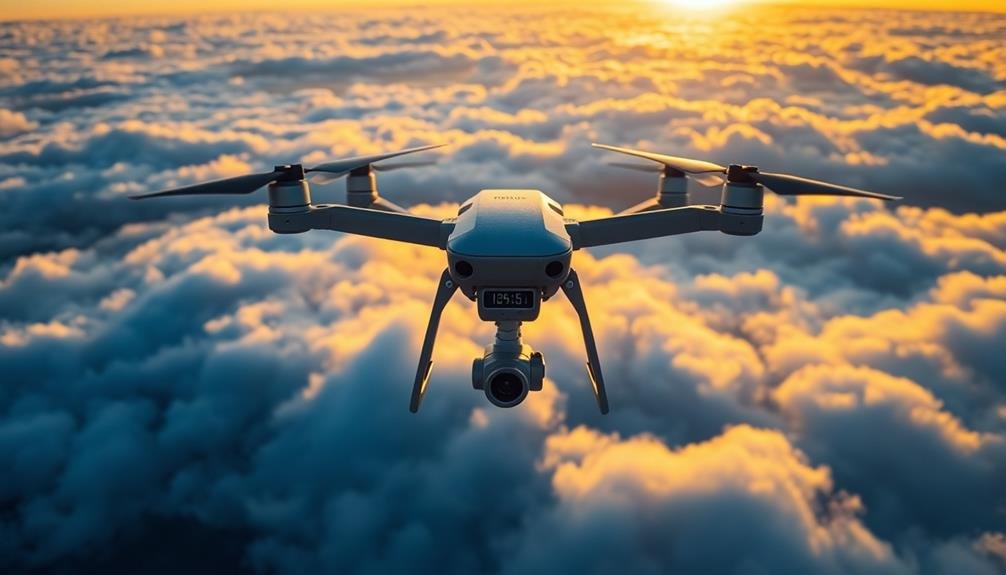



Leave a Reply